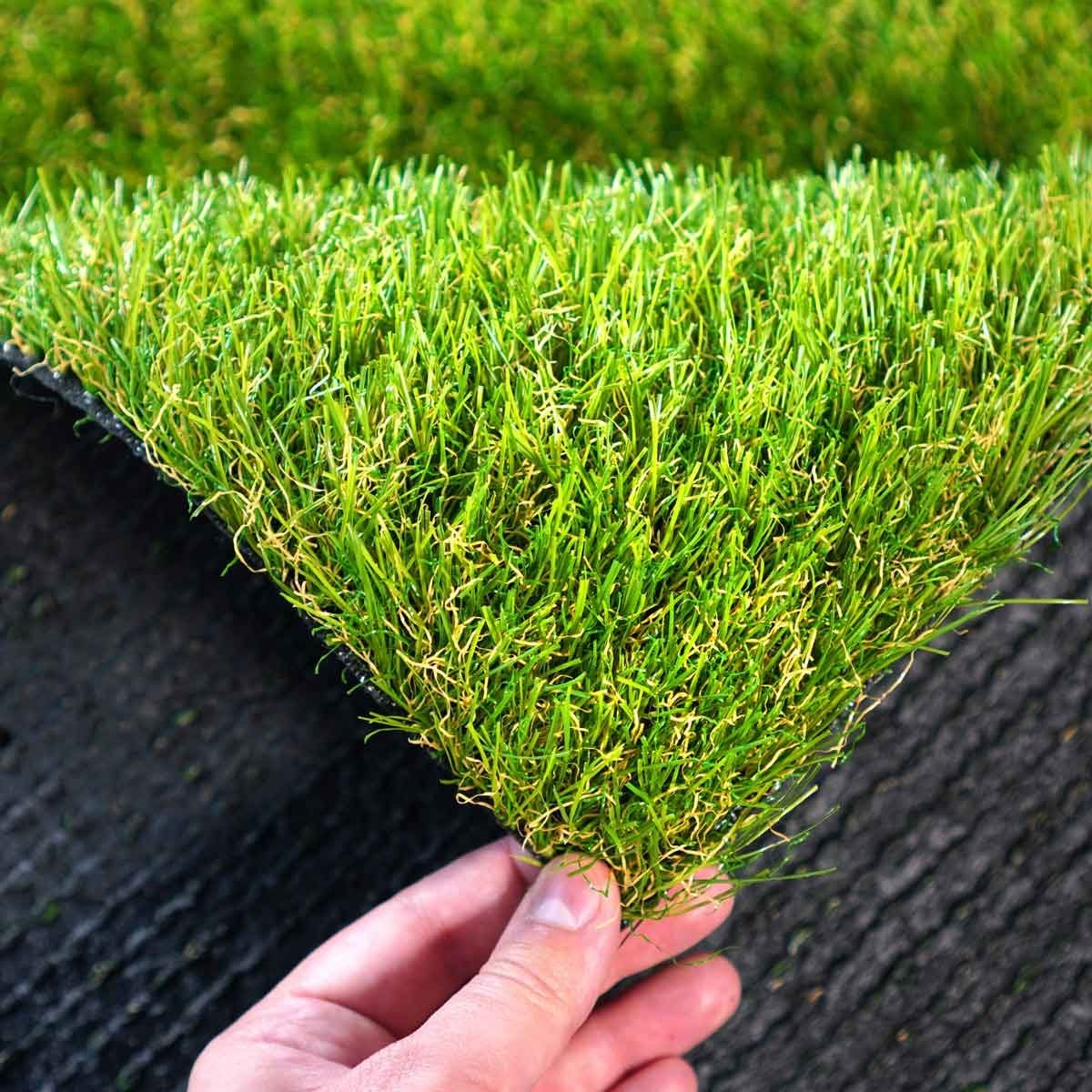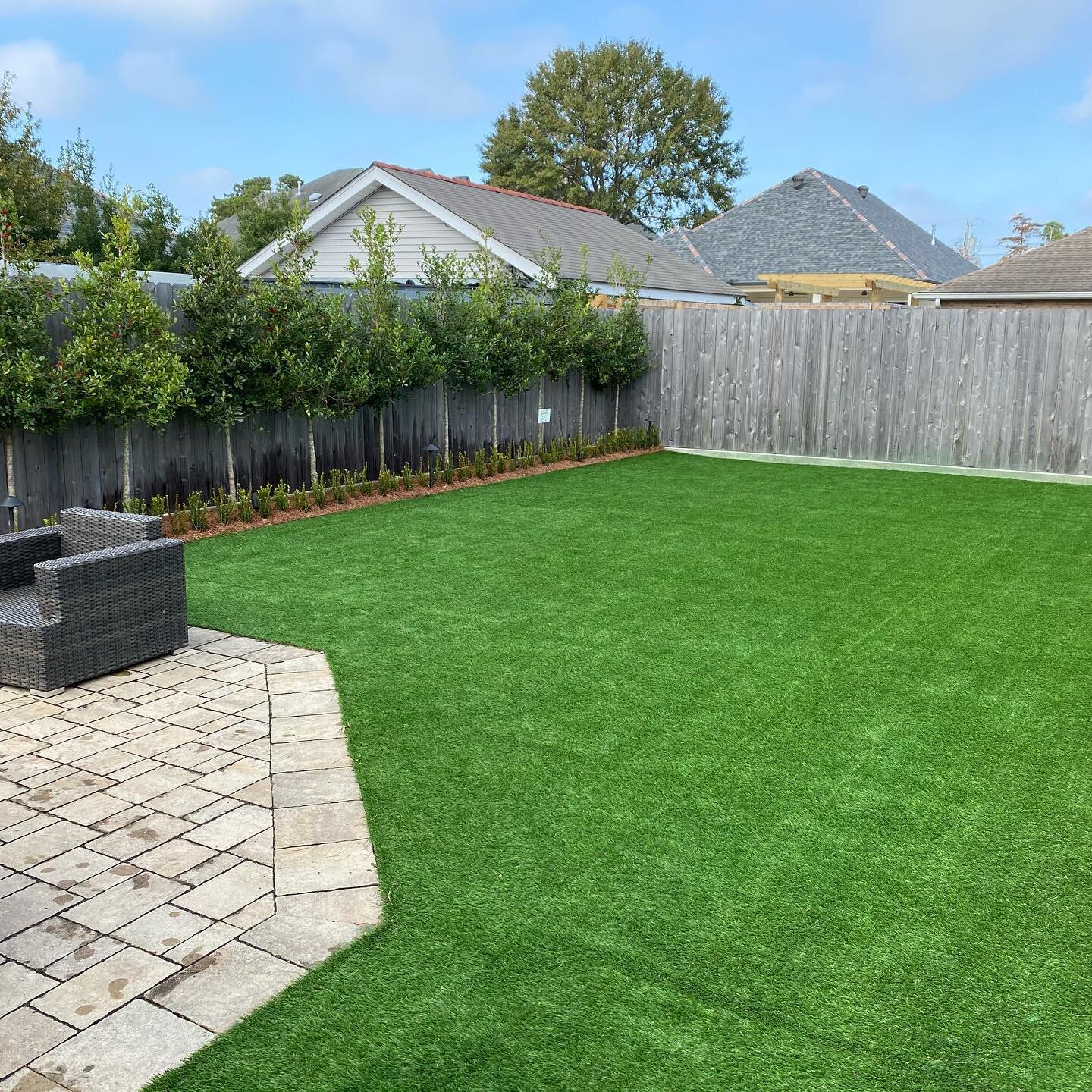Expert Arizona Turf Installation Solutions for Residential and Commercial Use
Expert Arizona Turf Installation Solutions for Residential and Commercial Use
Blog Article
Look Into the Environmental Conveniences of Opting for Artificial Grass Solutions
The adoption of synthetic grass options provides an engaging possibility to address pushing ecological challenges. By significantly reducing water use and minimizing the application of damaging chemicals, these options not just advertise sustainable landscape design yet likewise shield regional ecosystems. The reduced carbon impact associated with lowered maintenance tasks contributes to a much more sustainable technique to land management. The implications of these advantages extend beyond simple conservation initiatives, raising concerns concerning their lasting effect on habitat preservation and general eco-friendly balance. Discovering these dimensions exposes an intricate interaction worth taking into consideration.
Water Preservation Advantages
One of the most considerable benefits of synthetic grass is its capability to save water. Standard yard yards require significant watering, particularly in areas susceptible to dry spell or water limitations. In contrast, artificial turf does not need watering, significantly reducing the total demand for water resources. This attribute is specifically valuable in deserts where water deficiency is a pushing issue.
By eliminating the need for regular watering, man-made turf adds to sustainable landscape practices and helps minimize the environmental effect of excessive water usage. Furthermore, the preservation of water extends to the reduction of overflow, which can lead to soil disintegration and waterway air pollution.
Furthermore, the installment of fabricated turf allows property owners and municipalities to designate water sources extra efficiently, concentrating on essential uses such as alcohol consumption water and farming. The change towards synthetic grass not just advertises responsible water usage however likewise straightens with more comprehensive ecological goals focused on protecting natural resources.
As neighborhoods progressively focus on sustainability, the water preservation advantages of artificial turf provide a compelling situation for its adoption in commercial and residential landscape design projects.
Reduced Chemical Usage
The transition to synthetic grass substantially lowers the dependence on chemical treatments commonly made use of in natural lawn maintenance. Typical turf monitoring typically involves the application of plant foods, pesticides, and herbicides to advertise growth and control pests. These chemicals can pose threats to human health, neighborhood wildlife, and the setting, adding to dirt and water contamination.
On the other hand, synthetic grass eliminates the demand for these harmful materials. When installed, it calls for minimal upkeep, largely being composed of routine cleaning and irregular infill replenishment. This reduction in chemical use not only profits the instant setting however also adds to wider ecological stability. By decreasing the launch of artificial compounds into the community, fabricated grass advertises much healthier dirt and water systems.
Furthermore, the lack of chemical overflow connected with man-made turf setups helps shield local rivers from air pollution, supporting marine life and preserving biodiversity. Arizona turf. As neighborhoods progressively focus on lasting practices, selecting synthetic grass offers a feasible remedy that straightens with environmental conservation objectives. Through this shift, homeowner can delight in rich environment-friendly areas without endangering environmental health and wellness, leading the way for an extra lasting future
Reduced Carbon Impact

In addition, the installation of fabricated grass can lead to considerable water preservation. Natural yards need substantial quantities of water for watering, which not just includes in the carbon impact related to water extraction and therapy yet additionally stress regional water resources. On the other hand, synthetic grass needs minimal maintenance, needing no watering, thereby dramatically lowering water use and its linked power prices.
Additionally, the longevity of synthetic turf contributes to its decreased carbon influence. With a life-span of approximately 15 years or even more, the requirement for regular substitutes is reduced, leading to less waste and lower linked here power intake in production and taking care of conventional lawn choices. In general, artificial turf offers a lasting alternative for ecologically mindful landscape design.
Habitat Preservation
Environment preservation is a vital consideration in the debate over landscape design options, particularly when comparing synthetic grass to natural yard. Natural grass yards usually need comprehensive maintenance, consisting of making use of pesticides, fertilizers, and herbicides, which can detrimentally affect regional environments. These chemicals can leach right into the soil and waterways, harming indigenous flora and animals and disrupting neighborhood habitats.
In contrast, synthetic grass presents a chance to decrease the eco-friendly footprint of landscape design. By selecting artificial turf, property owners can decrease the disruption of natural environments related to conventional grass treatment practices. Synthetic grass removes the requirement for unsafe chemicals, thus securing neighboring wild animals and maintaining the integrity of surrounding ecological communities. Furthermore, the setup of artificial grass can cause the conversion of previous yard locations right into more biodiverse landscapes, such as pollinator gardens or native plant areas, which can sustain local wildlife.
Inevitably, the transition to fabricated grass not only saves water and reduces upkeep initiatives but also fosters a more unified partnership between human tasks and the native environment, advertising environment preservation at the same time.
Long-Term Sustainability
Long-term sustainability is a vital aspect in assessing the benefits of synthetic grass over conventional yard lawns. One of the most substantial advantages of man-made lawn is its durability; it can last approximately 15-20 years with marginal maintenance, whereas all-natural yard calls for regular reseeding and substitute. This durability reduces the demand for continuous resources, such as water, plant foods, and pesticides, which are crucial for preserving a healthy yard lawn.
Additionally, synthetic grass adds to a reduction in carbon exhausts related to grass care tools. Typical lawns usually need gas-powered lawn mowers, leaners, and blowers, every one of which contribute to air pollution. Arizona turf. On the other hand, artificial grass removes the need for such devices, advertising a cleaner setting
Additionally, the manufacturing of synthetic grass significantly utilizes recycled materials, boosting its sustainability account. As producers take on environmentally friendly techniques, the environmental footprint of fabricated grass remains to lessen.

Conclusion
The fostering of synthetic turf options provides significant ecological advantages, consisting of substantial water preservation, minimized reliance on unsafe chemicals, and a lower carbon impact. Synthetic lawn help in preserving all-natural environments by minimizing land disturbance and advertising long-term sustainability with the use of sturdy materials. Collectively, these variables underscore the helpful hints capacity of synthetic lawn to contribute positively to ecological health and use a practical option to typical landscaping methods in a significantly resource-conscious globe.
In comparison, visite site synthetic grass does not require watering, significantly minimizing the overall demand for water resources. By lessening the launch of artificial compounds right into the ecological community, artificial turf promotes healthier dirt and water systems.
Additionally, the setup of man-made grass can result in significant water preservation. In comparison, fabricated lawn requires marginal upkeep, needing no watering, thereby significantly decreasing water usage and its associated energy expenses.

Report this page